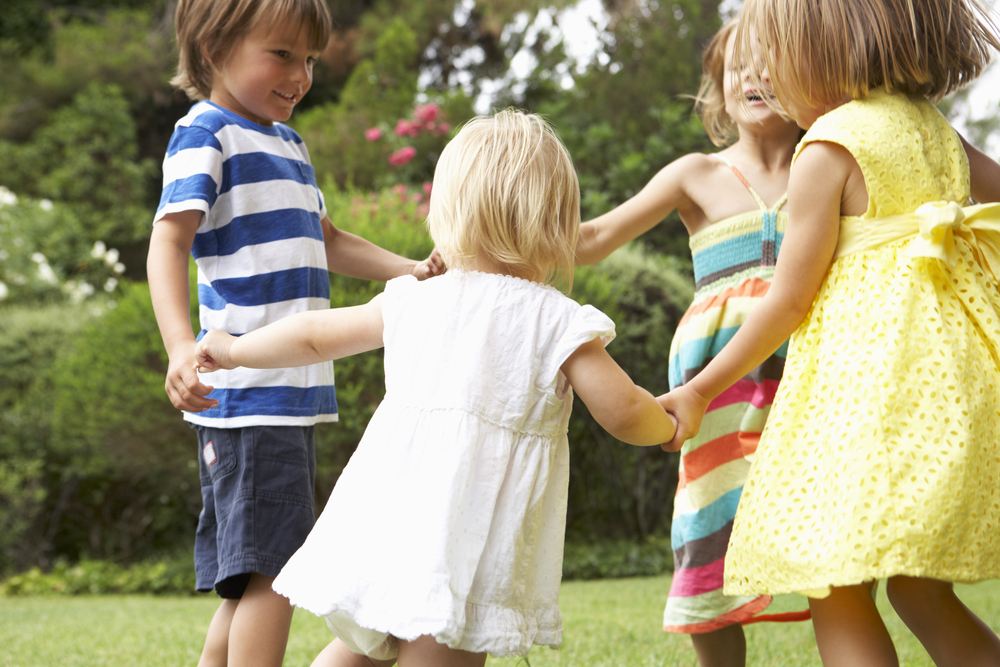Learning new languages together with children is great: they approach learning a language like it’s a natural thing to do and don’t usually worry too much about it. Learning with them is especially fun when you use games, post-it notes, children’s TV shows and songs. With these, the whole family will learn without even noticing!
Nursery rhymes and games
Even very young children are able to learn simple children’s songs and nursery rhymes by heart. Many well-known songs, such as “Twinkle, Twinkle, Little Star”, exist in several languages, and children find it fun to learn a familiar song in a new language. On the other hand, they find completely new songs and rhymes exciting, too. An American friend of mine taught my 2- and 4-year-olds the rhyme “Ring-a-round the rosie” and the game that goes with it. They fell in love with it completely and learned several new words right away.

“Ring-a-round the rosie,
A pocket full of posies,
Ashes! Ashes!
We all fall down.”
Board games for the whole family
Word games like Alias and Taboo can easily be used for language learning. If everyone is a beginner, it’s best to use children’s versions of word games for less complex words. Playing develops speaking and listening skills and builds and strengthens vocabulary. Older children might also like to try Scrabble.
Children’s TV and movies
Children’s TV shows and movies are another fun way to learn a language. For small children, there are lots of suitable videos online in various languages – look for internationally well-known programmes like Peppa Pig. You can also watch clips of songs from animated movies on YouTube. How about “Let It Go” from Frozen or “Circle of Life” from The Lion King? The lyrics for singing along can be easily found online as well.
If the children can read, it’s definitely worth it to watch animated movies with subtitles and the original voices instead of with dubbed voices. For a bigger challenge, use foreign subtitles or closed captions as well.

Post-it notes
Build vocabulary by sticking post-it notes on objects in the home and writing the names for the objects in the language you’re learning on them. Seeing the words several times a day is a quick way to learn through repetition.
WordDive
We recommend WordDive for children from 10 years and up. However, individual differences at this age are quite big. The suitability of the app depends more on how well your children can write and their maturity. The learning material in WordDive has been designed for adults, but I do know several elementary school children who are really enthusiastic about the gamelike features and exercising with pictures!
A mighty mix of language learning professionals, engineers, designers, user interface developers, gamers and psychologists.








No Comments